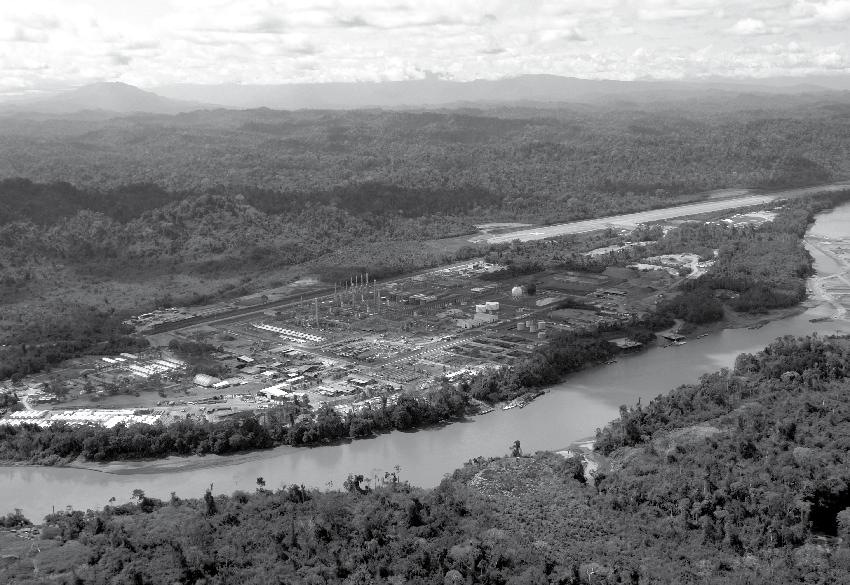
12 minute read
Members’ corner
Member s’ cor ner
This section of International Gas gives IGU members an opportunity to profile themselves and their relationship with the Union. In this issue we have a Q&A with Philippe Petitpierre, Vice Chairman of Charter Member Swissgas, who is also Chairman of Gaznat and Holdigaz, the latter being the gas distributor for Vevey where IGU is registered.
International Gas (IG) Could you introduce readers to Swissgas and give a brief overview of the role of natural gas in Switzerland? Philippe Petitpierre (PhP)
Natural gas has been developed in Switzerland since the 1970s, simultaneously with the setting up of the European transport network, a part of which crosses the Alps (the Transitgas pipeline system).
Swissgas, founded in 1971 as a private limited company, is a joint procurement and transport platform for four regional shareholders (regional gas suppliers) and provides its services on their behalf. The Association of the Swiss Natural Gas Industry (Verband der Schweizerischen Gasindustrie – VSG) is also a shareholder.
The Transitgas pipeline, originally built mainly for exports through Switzerland to Italy and inaugurated in 1974, underwent a major expansion programme between 1997 and 2002 to increase capacity with new strings and branches. Switzerland imports a large proportion of its gas (annual total sales 3.5 bcm) from this network.
Gas covers some 13% of total Swiss energy consumption, which

c Philippe Petitpierre, Vice Chairman of Swissgas and Chairman of Gaznat and Holidaz. The painting behind him depicts work on the tunnel beneath the Alps for the Transitgas pipeline.
x The Transitgas compressor station at Ruswil.
xv Switzerland’s network of gas filling stations covers the country.
compares to a share of 22-25% in other European countries due to the low use of gas for power generation in Switzerland. Hydro and nuclear power account for the bulk of the country’s power generation. The challenge for the Swiss energy industry will be meeting higher demand for electricity with a sustainable mix of sources and important developments in the gas sector are expected. A huge national challenge will be replacing the generation capacity of the nuclear plants between now and 2030 as there is a ban on building new ones.
IG How has Swissgas been involved in the drawing up of the Swiss National Energy and Climate Plan and what is the outlook for the gas industry in Switzerland to 2030?
PhP Swissgas in particular, and the Swiss gas industry in general, are fully involved in the process of energy transition in our country. As such, we are working closely with the Federal Office of Energy and Federal Authorities on the implementation of new legislation (a gas supply law known as LApGaz) aimed at aligning the Swiss gas industry’s objectives to those of the energy transition that is envisaged for our country following a recent referendum. The latter established the measures to be put into place in order to achieve the set goals regarding the reduction of greenhouse gas emissions in our country.
The new legislation, which aims at partially opening the natural gas market in Switzerland by allowing customers consuming more than 100 MWh (equivalent to 9,479m3) a year to choose suppliers, acts in reality as a useless and counter-productive regulation law, which even represents a risk to the development of new technologies in favour of the energy

transition. Such a law will more than likely prevent the energy transition’s objectives from being achieved, specifically due to the issue of progressively giving up nuclear energy, the lowering of national electricity production and the probable increase of total consumption.
Switzerland plans a reduction in natural gas usage equivalent to the proportions mentioned in the COP 21 Paris Agreement. Our industry is thus considering using renewable gas (biogas) to an extent of 30% of the thermal energy market by 2030. This mix allows a reduction of CO 2 emissions by 50% in comparison with heating oil. In 2018, the share of national production of biogas that was injected into the gas network amounted to 361 GWh, an increase of 9% compared to the previous year. Today, some 30 biogas plants in Switzerland directly inject their production into the gas grid.
Fuelled by gas
Holdigaz converted this Opel GT to run on gas and increased its output to 430 metric horsepower (PS). The Opel GT was produced originally in a limited edition with a four-cylinder turbo-charged 260 PS engine running on regular petrol.
The Holdigaz conversion kit was developed in collaboration with the École Polytechnique Fédérale de Lausanne. Engineers worked on the engine, from the air intake to the exhaust pipe, adjusted the electronics to deal with natural gas parameters and modified the brakes and suspension. They also changed the regular doors into scissor doors (portes en élytre) and made many other body improvements.

IG Switzerland has long been recognised for its involvement in natural gas mobility and its developments. Where do you stand now?
PhP In order to address this aspect of our developments in Switzerland, allow me to respond with the voice of Holdigaz SA, which is a firm that delivers gas, quoted on the stock exchange and mainly privately owned. For more than 30 years, we have committed ourselves to research and development, as well as commercialisation in the field of natural gas mobility.
Following our participation in the creation of the International Association for Natural Gas Vehicles (IANGV) in 1986, which was renamed NGV Global in 2010, Holidigaz became involved in the development of gas injection systems for combustion engines, including regulation and optimisation of the performance of such transformed engines. Facing the “chicken or egg” syndrome, Switzerland chose to prioritise the development of a network of gas filling stations. As a result, the firm Gazmobil SA was created, whose mission was to develop this network around the country which it did thanks to the involvement of the Swiss gas distributors.
Today, Switzerland has almost 150 gas filling stations open to the public and more privately owned. This enables a user of a gas-powered car to drive across the country from west to east and from north to south without resorting to alternative fuels.
For many years now the Swiss gas industry has been introducing biogas into the supply used by natural gas-powered vehicles (NGVs). Thus the initial objective declared by our industry, which is to contribute to the decarbonisation of Swiss mobility, has expanded thanks to the fact that 20% of gas used by NGVs is biogas. Holidigaz is going even further. After having developed the natural gas injection concept, which was used for the first time in a special conversion of a powerful sports car (see box), our firm is now a major actor in a new project combining the advantages of electric mobility with the security of a sustainable gas supply.
Softcar is the name of this project, designed by the engineers who made the SwatchMobil, that later became the Smart. The Softcar benefits from the latest innovations in terms of mobility. The natural gas or biogas that is used is transformed by a REX (Range Extender) into electricity, and gives the vehicle an autonomy of more than 600 km in ideal safety and comfort
conditions. The car’s body is made entirely from biopolymers, developed from advanced compound material. Overall, Softcar has a “well-to-wheel” performance rarely reached. The Softcar factory will be built this autumn and production is expected to start in early 2021.
IG How do you benefit from IGU membership?
PhP Switzerland is proud to have contributed to the creation of IGU (see box) and then to its development over the decades. Switzerland has been an
Switzerland and IGU
v The prototype Softcar. Production of this innovative vehicle will start in 2021.

active partner from the beginning. Membership of IGU is a big opportunity for our country to develop a professional network of great value, as well as benefit from the possibility to participate in high-quality events dealing with gas industry issues, both
IG Thank you
technical and political.

The Swiss Gas and Water Industry Association (in German originally Schweizerischer Verein von Gasund Wasserfachmännern and later Schweizerischer Verein des Gasund Wasserfaches – SVGW – in French Société Suisse de l’Industrie du Gaz et des Eaux – SSIGE) was a founder member of IGU in 1931.
At the first meeting of the IGU Council, Switzerland was elected to hold the IGU Presidency for 1931- 1934 with Fritz Escher, Director of the Zurich city gasworks, as President. The triennium culminated with what was then called the International Gas Conference in Zurich in September 1934.
Switzerland hosted the IGU Secretariat from 1937 to 1949 at the SVGW office in Zurich, with the SVGW Secretary General Hermann Switzerland hosted the 15th WGC in Lausanne in June 1982. The venue grounds featured this globe Zollikofer also serving as IGU sculpture with a flame fed by natural gas. Secretary General.
Switzerland went on to hold Swiss gas companies and a Swissgas In 2006, Swissgas became the the IGU Presidency for a second time Board member, as President, and the Charter Member for Switzerland for the 1979-1982 triennium, with 15th World Gas Conference took place and SVGW/SSIGE became an Eric Giorgis, then Chairman of several in Lausanne in June 1982. Associate Member.
To
reduce uncertainty and enc urage natural
gas expl rati
n
Once the gas fields of the Camisea River area, better known as the Camisea Gas Fields, started up in August 2004, Peru began an energy transformation process that today is the dream of many countries all over the world. The power generation matrix is 55% from renewable sources (mainly hydroelectric) and 45% from natural gas.
In addition, Pampa Melchorita, an LNG plant for export, was developed in the area, with an investment of around $3.5 billion, being the first natural gas liquefaction plant in South America, originating the monetisation of Block 56 resources and the increase of NGL production, especially LPG, helping to cover the exponential growth of its demand at that time.
Currently, the Peruvian government is focused on relaunching a tender for the construction of the Southern Gas Pipeline, now called the Natural Gas Integrated Transportation System (SITGAS is Spanish), a project that will not only join the contingent resources of Block 58 with the two 750 MW generation plants built in the south, but will also give energy security to the country that is currently dependent on the gas pipeline operated by TGP, and finally, will also allow oil companies to develop the exploratory potential of the Madre de Dios basin, where the existence of gas has already been proven, being part of the sub-Andean belt as well as the Camisea fields, with the knowledge that there is a pipeline to evacuate any discovery.
The Madre de Dios basin has more than 7.5 million hectares with sedimentary rocks of more than 6,000 metres, with a natural gas potential to be explored. It is part of the trend of giant oil, gas and condensate fields in South America and is clearly an area with significant potential for gas and condensate accumulations, with around 12 tcf of prospective resources in 19 structures.
The stratigraphy of the basin is made up of sedimentary rock formations whose age range goes from the lower Paleozoic to the Cenozoic. The geological units of the continental environment are well distributed and exposed, deposited in different geological periods; while the marine sequences have been developed during the Upper Paleozoic and Lower and Middle Cretaceous, with dives during the Upper Cretaceous and early Tertiary.
The exploratory effort in Madre de Dios basin began with the drilling of 5 wells in the 1970s, one exploratory well discovering gas and condensates in 1999 and one exploratory well that did not reach the target during a drilling campaign in 2015, which positions the basin as an unexplored area.
In the Madre de Dios basin there are 7,790 linear km of 2D seismic, more than 95% of its extension is covered with magnetometry data, 65% covered with gravimetry data, and a discovery well with contingent resources of the order of 2 tcf. Additionally, during this year, 156 2D-GMA magnetotelluric stations will be acquired, spaced every 300 metres with a coverage of 46 km and a target depth of 7,000 to 8,000 metres; in order to generate and obtain knowledge of the structural geology and existing oil systems in the basin, which will form part of Perupetro’s integral studies to evaluate the hydrocarbon potential of the basin.
Perupetro, the agency in charge of promoting hydrocarbon investment in Peru, has started a process of education in different institutions of the Peruvian government in order to make them aware of the importance of exploration activities in Peru, the replacement of the reserves we are consuming and the role of natural gas in the transition to renewable energy.
Peru is a country with huge gas resources and even greater exploratory potential, which meeds to increase its domestic demand, progressively replacing diesel and other petroleum products with natural gas, and focusing on reducing imports of dirty fuels (petroleum and diesel). With the expansion of domestic demand and pipelines available to monetise reserves, exploration activities for natural gas will also increase, especially in the Madre de Dios area where there is the potential to guarantee the country's supply in the long term.
Perupetro plans to tender blocks of the Madre de Dios basin in 2022, this is a great opportunity for large companies that are focused on assets with natural gas potential, who also have extensive experience working in environmentally sensitive areas and can prove, with successful case histories, the compatibility between this industry and the conservation of ecosystems, which are also part of the requirements to access these areas of great potential.
















